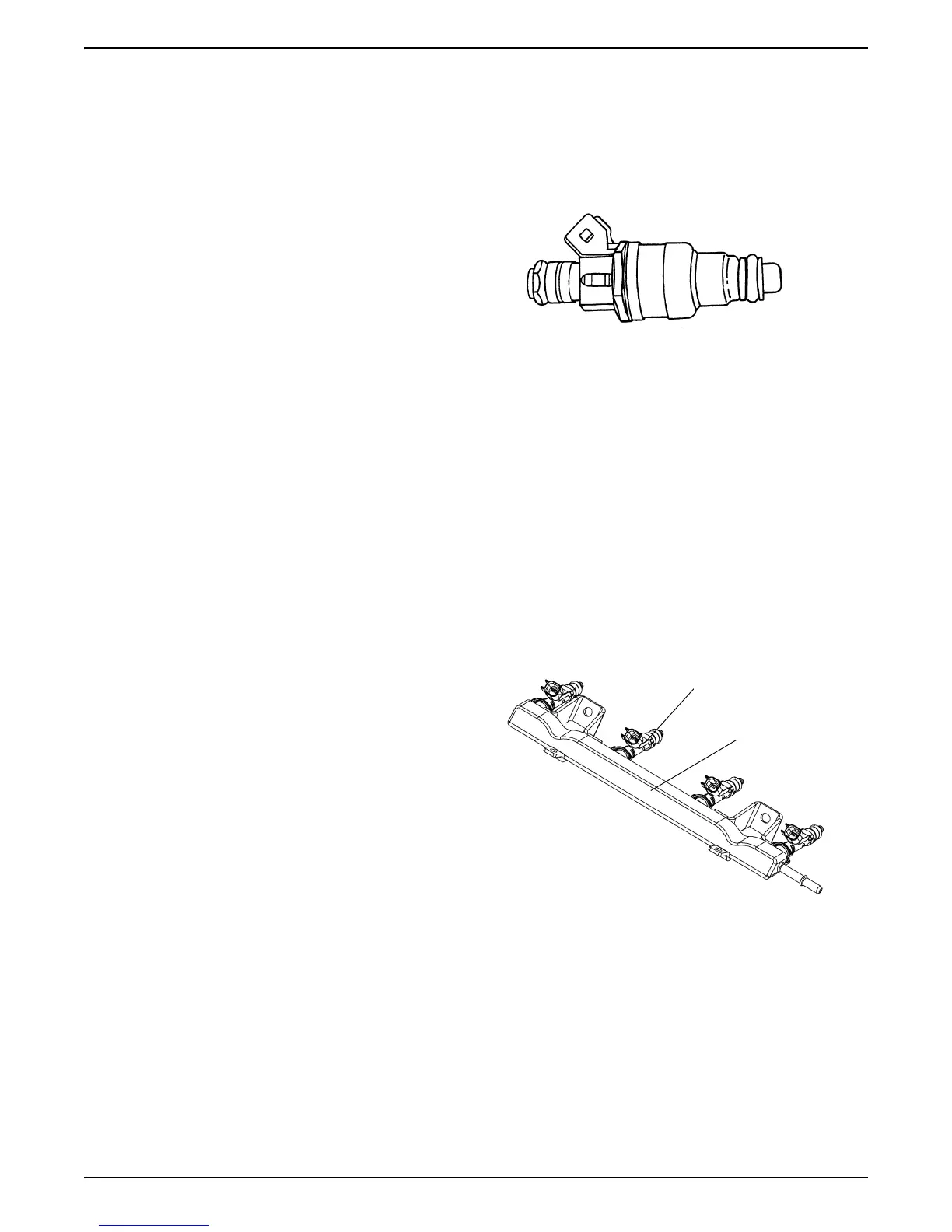DSG-423 ENGINE CONTROLS
08-8
Fuel System Components - Gasoline
The fuel metering system is made up of the following
parts:
• The fuel injectors
• The fuel rail
• The fuel filter
• The GCP
• The Crankshaft Position (CKP) Sensor
• The Camshaft Position (CMP) Sensor
• The fuel pump
• The fuel pump relay
• Heated Oxygen (HO2S) Sensor
• Temp/Manifold Absolute Pressure (TMAP) Sensor
The basic function of the air/fuel metering system is to
control the air/fuel delivery to the engine. Fuel is
delivered to the engine by individual fuel injectors
mounted in the intake manifold near each intake valve.
The fuel metering system starts with the fuel in the fuel
tank. The fuel is drawn up to the fuel pump through a
pre-filter. The electric fuel pump then delivers the fuel to
the fuel rail through an in-line fuel filter. The pump is
designed to provide fuel at a pressure above the
pressure needed by the injectors. A fuel pressure
regulator in the fuel filter assembly keeps fuel available
to the fuel injectors at a constant pressure. ?A return
line delivers unused fuel back to the tank?.
The main control sensor is the heated oxygen sensor
(HO2S) located in the exhaust system. The HO2S tells
the GCP how much oxygen is in the exhaust gas. The
GCP changes the air/fuel ratio to the engine by
controlling the amount of time that the fuel injector is
“ON”. The best mixture to minimize exhaust emissions
is 14.7 parts of air to 1 part of gasoline by weight, which
provides the most efficient combustion. Because of the
constant measuring and adjusting of the air/fuel ratio,
the fuel injection system is called a “closed loop”
system.
The GCP monitors signals from several sensors in
order to determine the fuel needs of the engine. Fuel is
delivered under one of several conditions called
“modes”. All modes are controlled by the GCP. Refer to
“Open Loop and Closed Loop Operation” for more
information.
Fuel Injector
The Electronic Fuel Injection (EFI) fuel injector is a
solenoid operated device controlled by the GCP. The
GCP energizes the solenoid, which opens a valve to
allow fuel delivery.
The fuel is injected under pressure in a conical spray
pattern at the opening of the intake valve. Excess fuel
not used by the injectors passes through the fuel
pressure regulator before being returned to the fuel
tank.
A fuel injector which is stuck partly open will cause a
loss of fuel pressure after the engine is shut down,
causing long crank times.
Fuel Rail
The fuel rail is mounted to the top of the engine and
distributes fuel to the individual injectors. Fuel is
delivered to the fuel inlet tube of the fuel rail by the fuel
lines.
